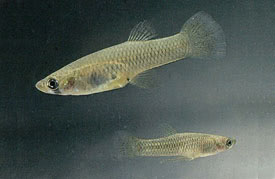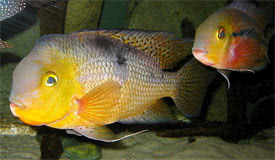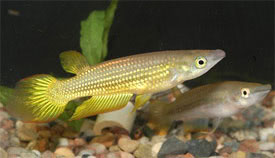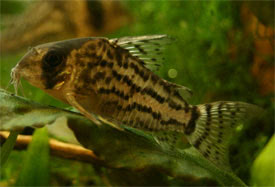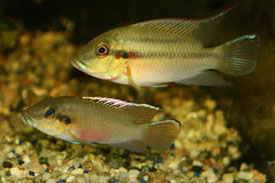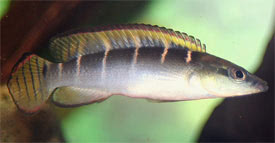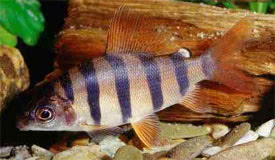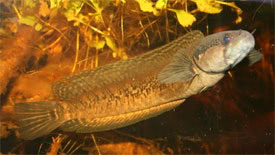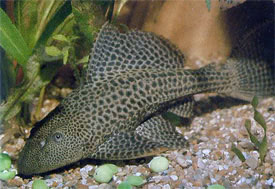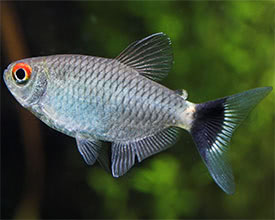
 Magyarul / Hungarian
Magyarul / Hungarian

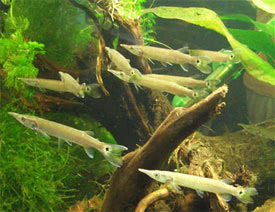
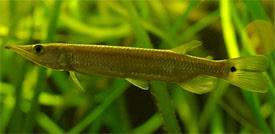
- Scientific name: Ctenolucius hujeta
- Synonyms: Ctenolucius hujeta hujeta, Ctenolucius hujeta insculptus, Ctenolucius insculptus, Hydrocynus hujeta, Luciocharax hujeta, Luciocharax insculptus, Xiphostoma hujeta
- Common name: Gar Characin, Freshwater Barracuda, Hujeta Pike Characin
- Group: Characins
- Habitat: South America; Venezuela, Colombia
- Size: 20-25 cm, in nature it can reach 70 cm
- Biotope: Inhabits in larger rivers around patches of floating or overhanging vegetation.
- Social behavior: Quite peaceful, and almost shy predator, can be combined with other large fish of the lower swimming levels, but will eat smaller fish. Do not keep with aggressive fish. This species is not aggressive towards conspecifics.
- Diet: Carnivorous; any live food, mainly fish, large insects and their larvae and crustaceans. The fish has a huge apetite.
- Breeding: Very hard
- Tank: Minimum 200 litres
- Population: 4-5 fish for 400 litres
- Decoration: Use a river sand substrate, and add some driftwood branches or roots. Plant the aquarium on the sides and the background, leave enough free swimming space. Dim the light using a loose cover of floating plants. The tank should have a tight-fitting lid as they may jump.
- Temperature: 22-26 °C
- pH: 5-7.5
- Hardness: 5-20 NK°
- Lifespan: 5-8 years
Description: Gar characin is an elongated, slender fish with a long snout and mouth. The body color is silver while the fins are transparent. The tail is forked and has a black spot at its base. The upper jaw is slightly longer than the lower. Gar characin can be sensitive to organic pollutants in water, so change half of the aquarium water once or twice per week.
In aquarium populations males are generally smaller than the females. During spawning, the males are noticeably slimmer, the anal fin is larger, the outside fin rays are clearly shorter with the middle rays the longes. The edge of anal fin is not straight but frayed. The anal fin of the female is triangular, the outer fin rays are longer and the edge of anal fin is straight. Breeding setup in pairs or also possible in small group with extra males. Courtship begins with the males chasing each other through the tank, followed by swimming in parallel, displaying with extended fins, turning in circles and biting. The female is also chased initially. Then the male and female start swimming close beneath the water surface. Originating from this phase, male and female lift the back third of their bodies out of the water after a strong tail swing. Under strong quivering, eggs and sperma re released. During this phase, the male claspes the female’s stomach in the region of the genital papilla with his larger anal fin. Due to continued tail beating and the reentry of the tail into the water, a part of the spawn and air bubbles are whirled on water surface. The interval between individual spawning acts initially is 2-3 minutes. Spawning lasts about 3 hours. The spawn is not sensitive and develops in soft or hard water equally well. At a water temperature of about 27 °C the larvae hatch after 20 hours. Large females can lay 3000 eggs, but usually the number of the eggs are 1000. After 60 hours the young are free swimming, and can be fed with rotifers, cyclops and artemia nauplii. Rising the fry is easy when feeding 3 times per day, otherwise they are cannibalistic. Perform frequent water changes.




